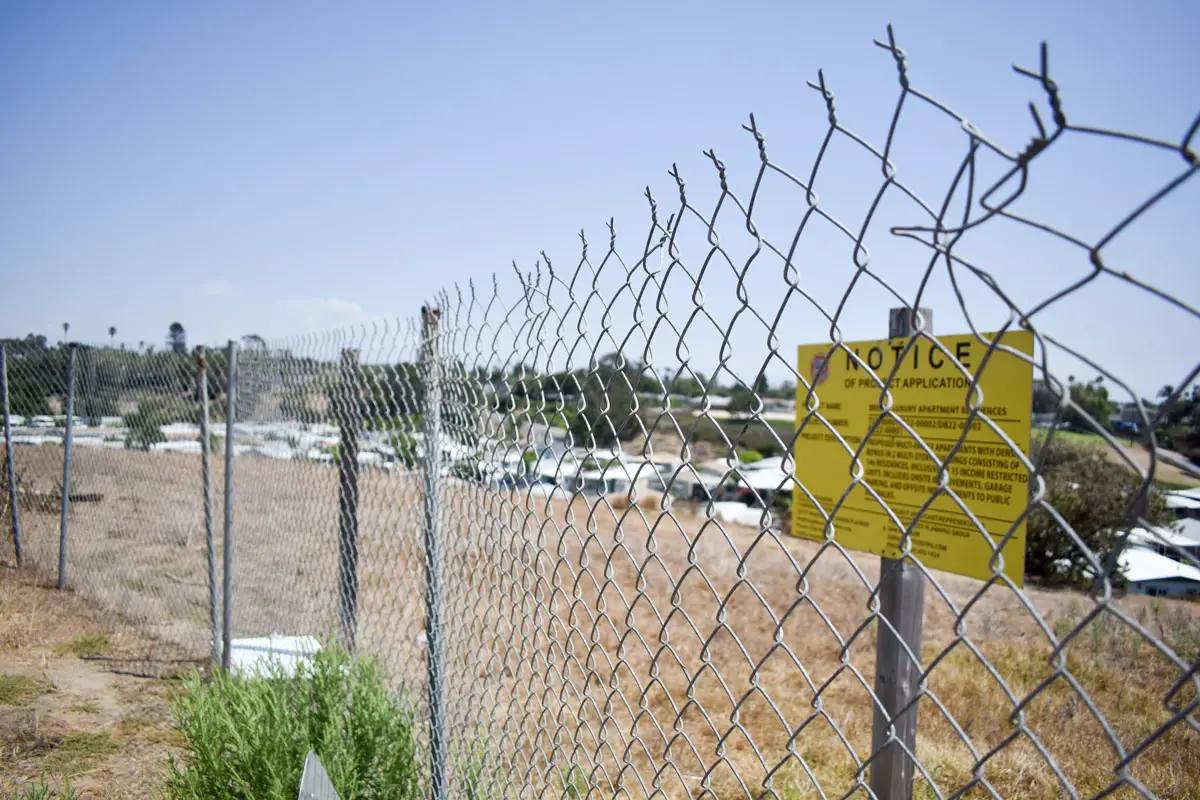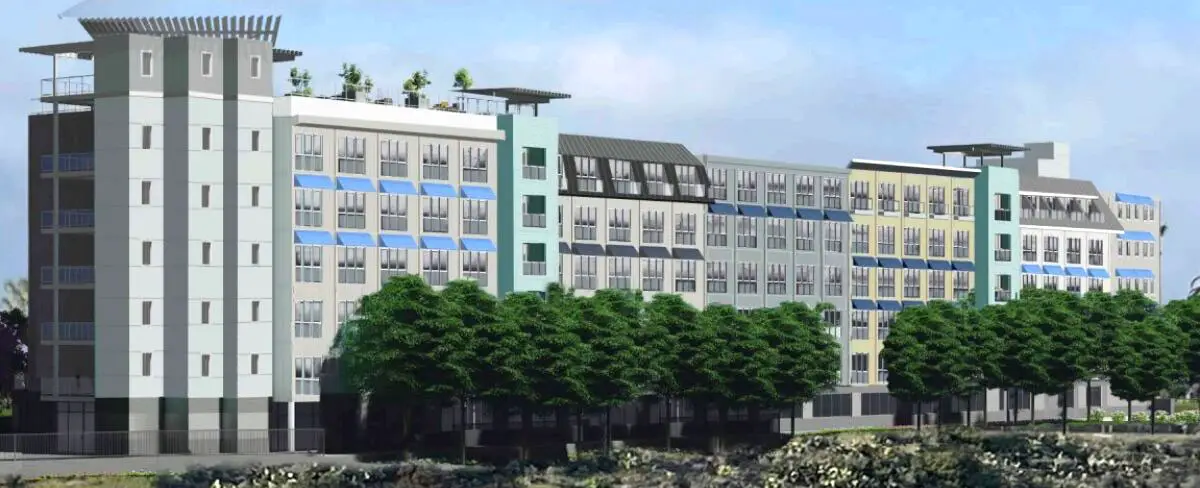OCEANSIDE — In early December, the Oceanside City Council narrowly approved the controversial Breeze Luxury Apartments despite the city’s Planning Commission twice rejecting the project earlier this year.
Originally approved as a 34-unit townhome project in 2019, developers later expanded the proposal into the six-story Breeze Luxury, a 146-unit apartment complex set to take over a 2.67-acre property at the southern end of Ditmar and Nevada streets off Oceanside Boulevard.
The change followed the implementation of California’s Density Bonus Law, which allows housing developments that reserve a percentage of their units for affordable housing to receive additional density, waivers of local development standards, and incentives that reduce affordable housing costs and parking requirements.
Local zoning standards already designated the property as fit for high-density residential developments. However, under those local laws, the number could not exceed 97 units. Since developer Oceanside-Nevada L.P. proposed to reserve 15% of that amount (or 15 units) for affordable housing, the state Density Bonus Law usurps local zoning standards, allowing for a maximum of 146 units.

The Planning Commission first denied the project in August when the changed project was first brought forward. After developers made revisions to the project, they returned to the commission in September, where it was denied a second time.
In their rejection, commissioners cited the building’s aesthetics, compatibility with the local neighborhood and solar-panel glare as reasons they could not approve the project. The commission, and many residents, opposed to the project also believed that a new CEQA document was required to determine environmental impacts due to the project’s significant differences from the original concept.
The developer appealed the Planning Commission’s decision to the City Council at the Dec. 7 meeting, arguing the commission violated the state’s Housing Accountability Act because they did not have evidence of specific, adverse impacts to public safety regarding the project.
Developers also said the Planning Commission violated the state’s density bonus law and abused its discretion regarding CEQA findings. Developers argued that a new CEQA document would only be required if environmental impacts were more severe.
However, city staff found the project’s impacts were adequately mitigated.
City staff initially recommended approving the project at previous Planning Commission meetings, where the project was denied.
Principal Planner Rob Dmohowski reminded the council the state’s housing law limits the city’s ability to deny housing projects consistent with local development standards and contribute to the city’s need for housing, affordable or otherwise. Building design and perceived incompatibility with the character of a surrounding neighborhood also cannot be a basis for the denial unless specified adverse health or safety impacts are found.
The project is also considered a smart growth opportunity due to its location in the city’s draft Smart and Sustainable Corridor Plan and its proximity to public transit, such as the nearby Sprinter rail line.

“Staff concurs with the appellant and believes the project is consistent with the city’s land use element and housing element and would help the city meet its projected housing demand,” Dmohowski said.
Dan Niebaum of The Lightfoot Planning Group, representing the developer at the council meeting, said the city had a shortfall of 2,456 units in October as part of its Regional Housing Needs Assessment requirements. Of those units, 1,797 units were lower income.
Niebaum also noted the project received several letters of support from the North County Transit District, Oceanside Chamber of Commerce, California Renters Legal Advocacy and Education Fund and California Department of Housing and Community Development.
The state housing department’s letter reminded city leaders they must follow state housing laws or face litigation from the attorney general, which could cost the city $10,000 for each unit denied. The developer and other groups could also pursue litigation.
Despite those arguments, several residents remained convinced the project would be detrimental to the neighborhood, worsen traffic, create public safety hazards and stick out like a giant sore thumb.
“I can’t think of a worse project in terms of aesthetics alone but, more importantly, traffic and safety concerns,” said Maggie Myers.
Although the project will also finish sidewalk connections to create a pathway to the Crouch Street Sprinter Station, several residents still believed the path would still be too dangerous with the increased vehicle traffic from the project.
Councilmember Christopher Rodriguez said several people opposed to the 146-unit Breeze Luxury Apartments also objected to the much smaller 34-unit Breeze Townhome project three years ago.
“People don’t want housing developments in their backyard, and I understand that, but as policymakers making decisions on the future of our city… we desperately need more housing stock to create housing affordability,” Rodriguez said.
Rodriguez and council members Kori Jensen and Peter Weiss approved the project.
“I think it’s big, ugly and out of scale with the neighborhood,” Weiss said before approving the project.
Mayor Esther Sanchez and Deputy Mayor Ryan Keim were the only two who voted against the project, instead preferring a plan that would have denied the project to require new CEQA findings be made before coming back for another vote.



